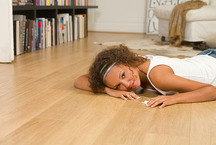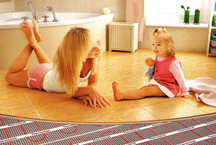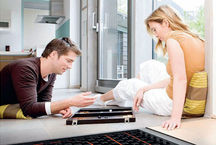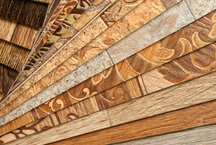If ecology is presented to a person as its interaction with the environment, then in our own home we interact with the floor more often. What kind of flooring do we have in each room? Most different, and, sometimes in the same apartment you can find a whole set of varieties. What of this is natural, semi-natural, harmless, and what is chemistry, and obviously harms our body? Dip into the world of facts and misconceptions regarding flooring.
Laminate
Let's start with a big chemistry - with the most popular for today and easy to install material for the floor. Although, if we analyze what we have to drink, what we breathe and so on, then the materials from which the floor coverings are made will not be so bad for our health. Well, at least they are no more harmful than the rest of our environment.
Traditionally, the name "laminate" can be attributed to any material that is made by carefully joining, "soldering", bonding finished films. According to the manufacturing method, this material is usually divided into low and high pressure laminates. High-pressure laminate, or composite laminate, has a natural base - chipboard or fiberboard, and the top is covered with several layers of very durable paper, which, in turn, is impregnated with various resins. Low pressure laminates have a slightly smaller number of layers. In addition, and in another material, a protective top layer provides the highest levels of wear resistance and durability of all currently existing floor coverings. The best laminates of well-known manufacturers constantly receive high awards at international and European exhibitions, including awards for environmental friendliness of the material. Even in the countries of Scandinavia, in which strict requirements are imposed on environmental safety, some laminates have been awarded the Golden Swan environmental label. So modern chemistry can also be harmless.
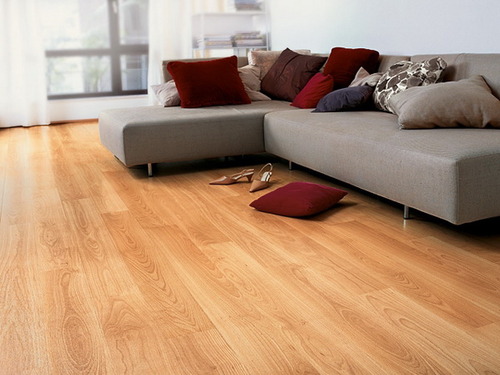
High pressure laminates are somewhat safer in terms of environmental performance., because in them emissions of substances harmful to the human body. So even people who have a tendency to allergic manifestations and a special sensitivity to harmful substances, will feel quite comfortable in any room with such a floor.
Experts say that laminates have one major drawback: its static nature. But today, manufacturers have already mastered the technology of producing materials with anti-static coating. In practice, this is easily verified - you need to rub the laminate a little, and then throw a sheet of paper on it. Paper does not stick to the antistatic laminate.
Parquet
Piece or parquet flooring - this is really piece material, why do it from synthetics, if it is still relatively expensive? Of course, this is the most natural, natural material from natural raw materials. It is literally solid wood. But you still need to remember that often parquet is made from special wood species, which is very valuable and requires respect and careful maintenance as a noble material.
This is a special hitch: in spite of the fact that our modern houses and apartments are much more convenient, more practical and more comfortable than the previous dwellings, all natural materials feel very hard in them, especially with time. The fact is that floors made of concrete, as well as concrete walls do not “breathe”, but only absorb moisture into themselves.This is especially true of the heating season, when the air in the apartment becomes over-dried, despite the humidifiers that civilized society uses today everywhere. And windows from plastic and metal with their new hermetic profiles make our microcosm even more clogged. Under these conditions, if you notice, houseplants do not always grow well, furniture crackles and cracks, and natural parquet "dies" over time. And in order to prevent this, it is necessary to fence off, isolate the parquet from the concrete floor, making an additional screed, on which you must then lay a moisture-resistant substrate, it is best plywood.
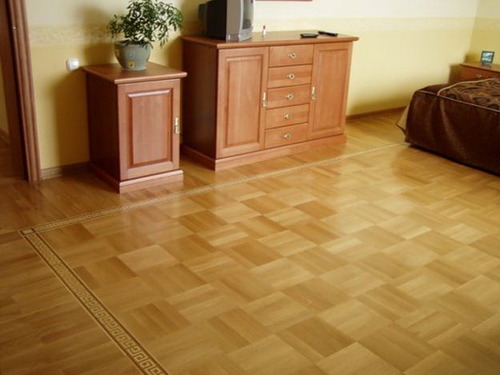
Photo: moscow.olx.ru
Parquet we boldly refer to the most natural - so, to the most environmentally friendly flooring. Just like all natural materials, it is expensive, and also requires particularly careful attention and careful handling.
Bung
How can you forge a cork? Although, with modern technology you can certainly. Only this is expensive material, and it will be expensive and unprofitable to forge it with synthetics and chemistry. So cork floors are also natural. Cork is the bark of Portuguese corkwood, a very lightweight, porous and incredibly pleasant to the touch material.
Cork floor with pressure arising on it, for example, when walking on it in heels, shows amazing wonders of elasticity, flushing, but certainly returning to its original state. And for this miracle is responsible cork layer, which by nature has such an extraordinary "air" structure. Cork flooring is medically very useful. It absorbs well, and this characteristic property is very favorable for a person, as it gives the legs a rest, while unloading the spine. Especially such an impact of the material is useful for people who have ailments in the musculoskeletal system.
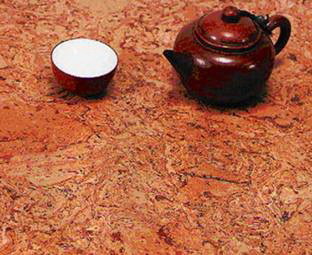
Photo: parquetservice.ru
The surface of the floor is antistatic, silky, it is very easy to remove any dirt and traces of fat from it. This floor does not attract dust, is not a source of unpleasant odors. For people suffering from allergies, in rooms with a cork floor, it is easy and free to breathe. And besides this - this coating is not only a great shock absorber, its elastic action and porous structure makes any movement around the apartment almost silent. So, laying a cork on the floor, you also get additional noise protection. Try to throw a bunch of keys on the laminate or parquet, and then do the same with a cork - and, as they say, feel the difference. In the price, by the way, also feel the difference. And get ready to spend a lot of money.
Linoleum
And now the most common so far to date material that serves in the vast majority of apartments flooring. it PVC linoleum, of course. Solid chemistry too. He also smells chemistry. However, you should not get upset. Almost all polyvinyl chloride coatings can provide the highest level of hygiene in the room. It is very easy to care for such floors, because all types of such linoleum have a protective top layer of polyurethane, from which it is easy and simple to wash off any stain and any grease. In addition, PVC linoleum is not subjected to the process of decay and has a small thermal conductivity.
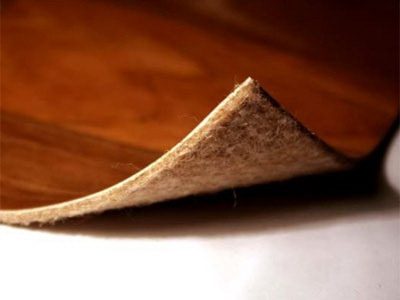
Photo: steelz.info
According to the structure, PVC linoleum is divided into two types: homogeneous and heterogeneous. A cut of homogeneous linoleum will appear before us as a homogeneous layer of polyvinyl chloride with various fillers. A protective coating is applied to the formation along the top, for example, a polyurethane film of the type RUR. There is also TOPLEAN coating that helps housewives fight dust - that is, it does not attract dust at all. Linoleums, which are intended for laying in medical institutions, also have a special coating against bacteria - SOMITIZED.On any linoleum, you can pour almost any oily liquid, and it will not leave marks, it will be easy to remove. Additional coatings protect against the formation of dents, increase wear resistance, facilitate surface care. Heterogeneous vinyl coatings on the cut look multi-layered. These types of linoleum not only have high mechanical performance, but also perfectly isolate the room from noise, being excellent sound absorbers.
PVC linoleum is produced by thousands of manufacturers, among this material is a huge competition, so the colors and textures are updated all the time, you can easily find a suitable option. Another thing - natural linoleum, which are produced in the world no more than a dozen companies. This coating has nothing to do with chemistry, but it has a lot to do with the highest cost.
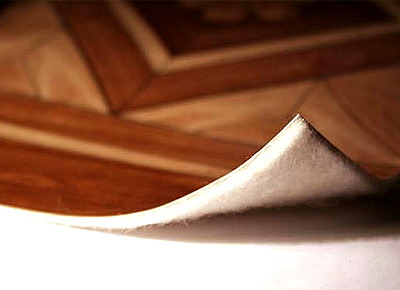
Natural linoleums were invented back in the 19th century, taking as a basis some kind of common, common, oilcloth. The material consists of natural components, such as cork, natural resins, wood flour, linseed and jute oils, and some others. Today, all these components are processed and packaged with modern, state-of-the-art equipment in accordance with constantly updated technologies. Natural linoleums are suitable for any children's, health, medical and other institutions, as they necessarily have an antibacterial coating. More precisely, the natural components themselves, processed in production, have bacteriostatic properties. And the top water-based ETC additional coating gives the material new mechanical properties, in particular wear resistance.
Ceramic tile
This type of flooring is often used in rooms where there is high humidity or there is a high probability of contamination of the floor. That is - bathrooms, bathrooms, kitchens. But after all, nobody and nothing prevents the use of this hygienic flooring in other rooms in our apartments! This is just a well-established opinion of society, since ceramics do not let water through and are perfectly washed and cleaned by various means, including chemically active ones. And how natural and environmentally friendly it is, you can judge by its composition: the tile is made from a mixture of quartz sand, clay and some other natural components that are pressed and baked at high temperature. Even a different color of the tile is provided by the inclusion in the composition of mixtures of different coloring pigments of exclusively natural origin. There are several production technologies, and the cost of the product depends on them, but it has virtually no effect on environmental safety.
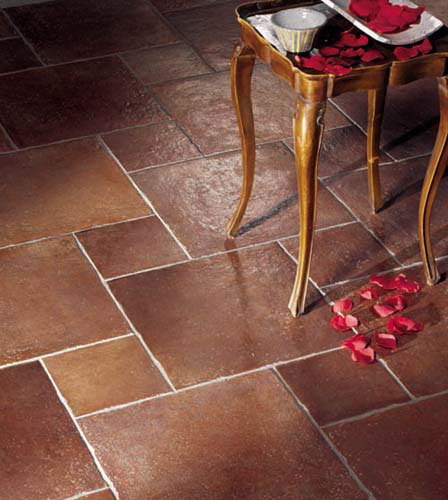
Ceramic tiles will serve you reliably and for a long time, even in the bedroom, even in the kitchen. Only there is a definite rule: a professional needs to install this floor, otherwise the wrong technology can ruin everything for you. In terms of durability of the material, of course, and not in terms of environmental safety. And when choosing a ceramic tile for rooms with a "heavy" microclimate, pay more attention to the degree of material resistance to various chemicals, as well as to the level of porosity - the tile can be with a low or high level of porosity, that is, absorb moisture differently.
Carpet
Laying carpets on the floor came up several thousand years ago, but in the modern age it is not only somehow not fashionable, but not relevant, impractical. However, such a floor is still comfortable, beautiful, pleasant and elegant. And in the twentieth century, carpeting was invented - not a piecework product, but a machine-woven roll web, having a certain width and supplied to the consumer by running meters. From the carpet, you can carve out any shape on the floor of the room.
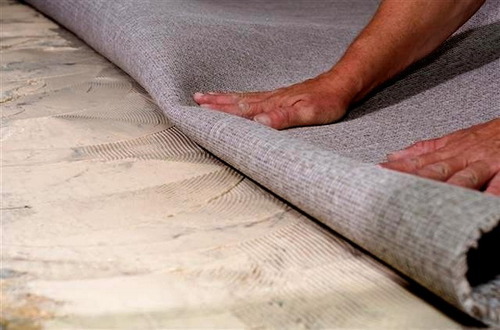
Photo: samodel-ka.ru
The coating consists of a primary base with a fixing layer, a secondary base and a pile attached to them.Any layer can be made from any raw material, that is, both from synthetics, and from natural materials. Only if the carpet is made of synthetic components, then its performance will be much better, that is, resistance to sliding and shrinking is higher, elasticity is higher, elasticity is better, and heat and sound insulation are more solid.
Pile can also be synthetic, and can be stuffed from natural raw materials, such as jute, flax, cotton, sisal, coconut, silk, and so on. The advantages and disadvantages of combinations of certain materials can be learned by carefully reading the instructions for a particular type of coating, there is no sense in combining the mass and considering them separately.
The carpet, the more solid, and even more so - non-removable (sometimes the carpet is “sewn up” under the baseboards) requires the most careful care, the most labor intensive than all other floor coverings. Dirt and dust particles not only accumulate on the surface, but also penetrate deep inside, clogging between the fibers. It is necessary to regularly use a vacuum cleaner, preferably a detergent, preferably with the use of chemicals that can break down grease and even solid particles of dirt. Only washing vacuum cleaners are not suitable for all types of carpet, also see the instructions for use. And, accordingly, choose the right one for you. And it is necessary to clean the carpet twice a year by a dry method using chemistry. So even natural carpets will definitely deal with active chemicals.
So!
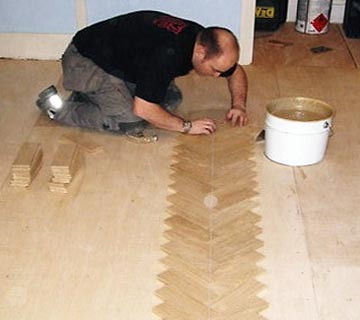
Photo: drevmast.ru
But in the end, in order to choose the flooring correctly, from an environmental point of view, you need to know another important detail! Any flooring, even synthetic, even natural, even though the floorboard in the country - is always covered with various protective agents, films, mastics and so on. These coatings give coatings - I'm sorry for the tautology - extra shine, aesthetic appearance, but most importantly - add additional physical protective properties.
And because we have direct contact with such protective layers, and not with the raw material itself! It turns out that it is the protective layers and determine the environmental friendliness of a material.
As we can independently understand, natural raw materials and natural materials are much more neutral in nature than chemical compounds. For example, for parquet lacquer coating will be less favorable than modern mastic based on natural resins. For a man, of course, too. In general, for parquets the most environmentally friendly coating material = beeswax. It is more expensive several times, but also safer incomparably. Therefore, give great importance to the protective layer and the choice of flooring and care for him.
